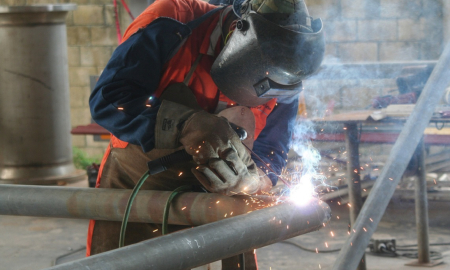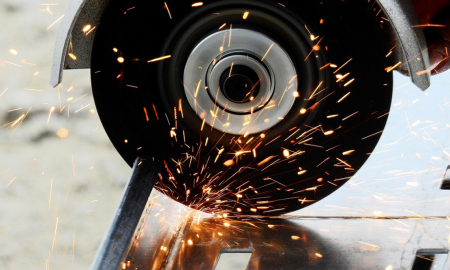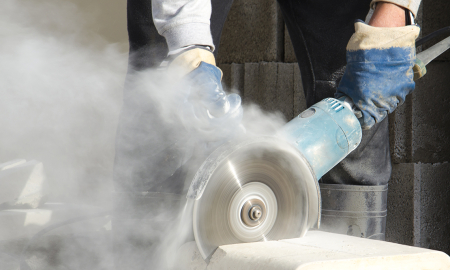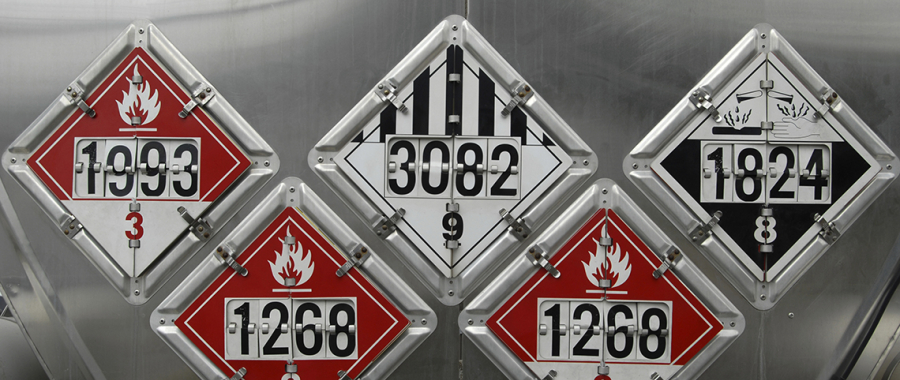COSHH Risk Assessment: A Comprehensive Guide
Our Occupational Hygiene team is here to offer further support to help others interpret and understand the COSHH risk assessment.
Whether you're in manufacturing, engineering, construction, health and beauty services, cleaning, or any industry involving hazardous substances, the following guidance aims to ensure your COSHH risk assessments meet the highest safety standards required by law.
Understanding COSHH
The Control of Substances Hazardous to Health (COSHH) is a legal framework designed to protect individuals in the workplace from exposure to hazardous substances. Understanding COSHH involves grasping the key concepts and principles of the COSHH regulations, and their application in carrying out a COSHH risk assessment.
The history of COSHH
COSHH regulations were first introduced in 1988 by the Health and Safety Executive (HSE). Aiming to reduce accidents and minimise the risk to employee health in the workplace, COSHH was introduced to ensure any business using hazardous substances does so in a controlled and safe way. Over the years, these regulations have undergone significant updates, particularly in 1994, 1999, and 2002.
Why is COSHH important?
The regulations have always been centred around the protection of employees and others from harmful exposure to hazardous substances. They impose general requirements on employers to protect employees and other persons from the hazards of substances used at work through risk assessment, control of exposure, health surveillance, and incident planning. Despite being in place for over 30 years, understanding and interpretation of COSHH regulations continue to be a challenge for many.
What is the aim of a COSHH risk assessment?
A COSHH risk assessment is a process aimed at identifying, assessing and managing the risks associated with hazardous substances in a given work environment. This process is essential in ensuring the protection of employees and others who may come into contact with such substances.
A COSHH risk assessment focuses on:
- Identifying the hazardous substances in the workplace.
- Determining the potential health hazards associated with these substances.
- Figuring out the tasks or activities leading to exposure.
- Establishing the necessary control measures to mitigate the risks.
The role of a COSHH assessment for improving health and safety
The purpose of COSHH is to protect the well-being of employees, which is required by law.
It guides you through evaluating the risks in your business and how you can best control or prevent them. Health monitoring, assessment of procedures and equipment should be undertaken regularly to ensure you uphold your compliance with COSHH. Most businesses will work with some substances which pose a risk to health; even exposures to general dusts - or products such as mild cleaning agents can be hazardous to employees if not used correctly.
A comprehensive COSHH assessment not only identifies potential hazards but also evaluates associated risks, providing a solid foundation for effective risk management. This assessment process is a vital part of your business's COSHH strategy. It significantly contributes to the establishment and maintenance of a safe and healthy working environment. By identifying potential risks to employee health within the workplace, it provides a starting point for the creation of safeguarding measures.
In line with the COSHH Regulations, employers are legally required to control substances that present any health risk in their workplace. This not only involves hazardous materials but also includes processes that generate harmful substances. Therefore, a COSHH assessment plays a role in ensuring compliance with these regulations.
Moreover, COSHH assessments are not a one-off activity. They should be an ongoing part of your health and safety procedures, regularly reviewed and updated to reflect changes in substances used, work processes and staff. Regular updates will ensure that the assessment remains relevant and effective in maintaining high standards of health and safety.
Safety Data Sheets: A critical document
Safety Data Sheets (SDS) provide comprehensive information on chemical products, enabling users to make informed risk assessments. Specifically, SDS outline the hazards posed by a chemical, offering essential data for identifying potential risks and establishing appropriate control measures.
SDS also provide instructions for safe use, a legal requirement under COSHH regulations. This information is particularly crucial for competent persons tasked with managing hazardous substances. Besides providing necessary precautions, it also outlines the action to take in case of emergencies, such as accidental spillages or exposure.
While SDS are vital, they should not be mistaken as a substitute for a COSHH risk assessment. They serve as a starting point, offering valuable data for the assessment. However, a full COSHH risk assessment still needs to be conducted, considering the specific circumstances of use within the workplace. This includes considering vulnerable people like children who may be at risk.
Hazardous substances under COSHH regulations
The COSHH regulations cover a broad range of substances that can pose a threat to health. This includes chemicals, products containing chemicals, fumes, dusts, vapours, mists, nanotechnology, gases, biological agents, and more.
Substances can be classified as hazardous under the COSHH regulations if they are toxic, harmful, irritant, corrosive or infectious. Even substances that may seem benign, such as general dust or mild cleaning agents, can be hazardous if not used correctly.
Besides substances for which an SDS is provided, processes that generate harmful substances must also be considered eg Respirable Crystalline Silica (RCS) from stone works; Diesel Engine Exhaust Emissions (DEEEs) from vehicles and generators; welding fume, woodworking dust, etc.
Back on 14 January 2019, the HSE shared with the Industry and Regulatory Forum on LEV that they have raised enforced control measures for welding operations in the UK.
This follows an announcement from the International Agency for Research on Cancer (IARC), who classified welding fumes and UV radiation from welding as Group 1 carcinogens. IARC published their findings in Lancet Oncology in 2017 in a paper titled ‘Carcinogenicity of welding, molybdenum trioxide, and indium tin oxide’.
The raised enforced control standards are detailed below:
- All forms of welding fume can cause cancer
- Control is required
- Indoor welding tasks require the use of LEV. If LEV is unable to control fume capture then Respiratory Protective Equipment (RPE) is also required
- Outdoor welding requires use of RPE
- Enforcement of the raised control standards is with immediate effect under COSHH Regulation 7
What are the effects of hazardous substances?
Some effects of hazardous substances include:
- Lung damage - Chronic Obstructive Pulmonary Disease (COPD) / Occupational asthma, as a result of inhalation of substances used at work;
- Skin irritation or dermatitis as a result of skin contact;
- Losing consciousness as a result of being overcome by toxic fumes;
- Cancer, which may appear long after the exposure to the chemical that caused it;
- Infection from bacteria and other micro-organisms (biological agents).
It’s important that all businesses, and even those individuals who are self-employed, take the necessary steps to protect themselves. COSHH applies to all industries using harmful substances including: catering, baking, beauty and hairdressing, cleaning, agriculture, quarries, engineering, manufacturing, motor vehicle repair etc.
Steps to ensure compliance with COSHH
Your control measures will depend entirely on the hazard itself. Adequate control under COSHH means:
- Apply the 8 principles of COSHH
- Do not exceed the WEL
- If the substance causes cancer, heritable damage or asthma, reduce exposure to as low as reasonably possible.
HSE provide details on adequate control including how to use, store, label and dispose of dangerous substances.
The 8 steps you can take to ensure you are compliant with COSHH are:
- Step 1. COSHH Risk Assessment; the risk assessment will identify all harmful substances which can damage health and the tasks where there is exposure to these materials.
- Step 2. Precautions; if you identify risks from your initial assessment, you should review precautions you can take to remove the risk or whether it’s possible to change internal processes.
- Step 3. Prevention or Adequate Control of Exposure; if you can’t eliminate the risk, control measures should be put in place for each risk based activity you identified in your assessment.
- Step 4. Maintenance of Control Measures; COSHH requires that you maintain your controls so they perform to the same standard as when they were initially introduced.
- Step 5. Monitoring exposure; to comply with COSHH, you may need to measure the concentration of hazardous substances in the air which could be breathed in by workers, where your risk assessment has concluded that exposure limits may be surpassed, control measures aren’t working properly or there is a serious risk to health if control measures fail.
- Step 6. Health Surveillance; after taking the steps outlined above, it will be apparent where some risk remains. Where appropriate, health surveillance should be a regularly planned assessment and health records need to be kept for at least 40 years.
- Step 7. Creating Plans and Procedures; in the event of an accident or emergency, you need to have the necessary processes in place to handle such a situation. This involves planning for an emergency whereby the exposure to dangerous substances goes far beyond day to day contact
- Step 8. COSHH Training; all employees need to be properly trained and provided with the relevant instructions.
Download our 8-Step Guide to be COSHH Compliant.
What does COSHH training cover?
COSHH training is indispensable for individuals handling substances with potential health risks. The training focuses on imparting a thorough understanding of hazardous substances, their effects, and effective risk management.
Key components of COSHH training encompass defining and recognising hazardous substances, comprehending hazards, risks, and consequences, and learning strategies to prevent or reduce exposure. Trainees are also equipped with the skills to conduct COSHH assessments, a legal requirement for identifying and managing risks associated with hazardous substances in the workplace. The ultimate goal is to empower workers with the knowledge and skills needed for the safe handling of hazardous substances, minimising the risk of harm, and ensuring regulatory compliance.
How can we support your business with COSHH risk assessments?
Our qualified occupational hygienists can provide a full service from hazard identification and monitoring to quantifying exposure and recommendations to improve exposure controls, as well as assistance with the COSHH assessment process.
Need some advice on COSHH risk assessments?
Leave your details and our experts will get in touch!






Add new comment